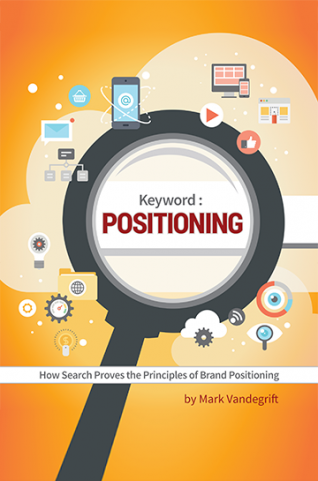An investment in advertising is key to driving sales and growing the organization, but despite its importance, an advertising budget is a difficult decision for many companies.
Jef Richards, professor and chair of the Department of Advertising at Michigan State University makes a compelling argument: “Advertising is totally unnecessary. Unless you hope to make money.”
So we’re going to advertise. But what’s the right amount?
Many companies struggle in deciding how much money to allocate to advertising. With many variables in the equation, we need a good starting point.
Knowing what your competitors are spending on advertising is good information — and it is available thanks to Schonfeld & Associates. Their advertising-to-sales ratio compilation shows estimates of what 330 industry sectors spend as a percent of total sales.
Spending varies widely by industry.
Jewelry stores spend 6.6 percent of total sales on their advertising budget.
According to this measure, if a store’s total annual sales are $3 million, its advertising budget should be $198,000.
Most other types of retail stores spend 3.9 percent. Steel manufacturers spend 0.1 percent of gross sales on advertising. Dairy products spend 0.6 percent on advertising; restaurants, 1.9 percent; banks, 2 percent; grocery stores, 0.7 percent; hospitals, 0.4 percent; and perfumes 21.5 percent.
Here is another method to determine how much to spend on advertising: Subtract the cost of goods and/or services sold and fixed costs such as payroll, rent, electricity and insurances from gross sales.
This leaves you with gross margin. For example, monthly sales are $100,000, and after subtracting cost of goods and overhead, you are left with $15,000. That’s a 15 percent gross margin. Multiplying this number by 12 is your annual gross margin, $180,000.
Then decide what percent of gross margin to spend on advertising.
Ten percent of $180,000 is $18,000. Dividing by 12 delivers a budget of $1,500 per month for advertising.
Will that be enough? How do you know if you set the right advertising budget?
Measure your return on investment (ROI). Let’s take a specific hypothetical advertising tactic from your marketing plan: an email campaign. Assume it costs $1,000 and increased sales by $3,000.
Is that a 300 percent return? No. Do the math: $3,000 sales, less your cost of goods and overhead, results in 15 percent or only $450 in gross margin. You spent $1,000 and after paying expenses are left with $450. So, the return on investment is a loss of $550.
Ouch!
In this example, with a $1,000 advertising expenditure, you’d have to have a sales increase of more than $6,000 just to break even.
The good news is that as your sales increase, your fixed expenses don’t, resulting in a higher gross margin percentage.
A rule of thumb is to target a 6-to-1 ROI ratio for advertising spend.
That is, for every $1 spent, expect a $6 increase in sales. Further, you should expect that some of these new customers will continue to purchase your product or service resulting in continued boosted sales.
A smart business will work to increase its gross margin percentage.
In most businesses, that’s the single-most critical figure. Very successful businesses have a 50 percent or more gross margin. For every $100 in sales, it makes $50. Apple is one of those companies.
Gross margin on its iPhone is a whopping 64 percent.
As a starting point, take a look at what your competition is spending using the advertising-to-sales ratio for your industry.
Then compare that figure to your gross margin percentage to determine how much additional sales you would need to support this level of advertising spend.
Marketing is hard. So it’s no wonder that figuring out the advertising budget can be such a struggle. Your situation is unique.
Geography. Competition. Market niche.
Many gray areas exist. Should the budget include all the costs of exhibiting at trade shows? Does it include salaries of employees dedicated to advertising? Is there a difference between the advertising and marketing functions? Do we separate out the sales function? Does it include the cost of new signage? New packaging?
Does it include the creative and production of materials such as the trade show booth, social media content, the new ad campaign, printed materials and the new website?
With whatever advertising budget you decide upon, that’s only the beginning. The money will always go further with the right message strategy. Your brand must stand for one cohesive idea, the position, in the minds of your customers and prospects.
The more the idea is different from your competitors’, the better. The more the idea is meaningful to your customers and prospects, the better. The more passionate you are about the idea, the better.
The right idea drives the development of the marketing plan. To learn what others in your business spend on advertising, click here.



